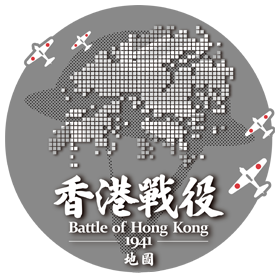Timeline (1919-1941)
| Date | Event |
|---|---|
|
1918 |
End of the First World War |
|
1919 |
Lord Jellicoe’s study on the naval defence of the British possessions in Asia |
|
1920 |
The Royal Navy drafted the earliest version of the War Memorandum Eastern |
|
1922 |
Washington Treaty End of Anglo-Japanese Alliance |
|
1925 |
Governor Stubbs submitted the Hong Kong Defence Report, pointing out the difficulty of defending Hong Kong with the support of the British main fleet Canton-Hong Kong Strike |
|
1927 |
Overseas and Local defence Committee submitted the Defence of Ports at Home and Aboard report Hong Kong Government bought the strip of land at Kai Tak to be used by the Royal Air Force First Hong Kong Defence report submitted by the Joint Planning Committee Vice Admiral Reginald Tyrwhitt drew plans to use small vessels to help the ground forces to defend Hong Kong |
|
1930 |
Joint Planning Committee suggested building a landward defensive line in the New Territories RAF Kai Tak was established as an air station |
|
1934 |
Joint Planning Committee again proposed to build a landward defensive line GOC Hong Kong Major General Arthur Bartholomew designed the landward defensive line Work on the landward defensive line started RAF Kai Tak became an airbase |
|
1935 |
Major General John Barrow, the Inspector of Fortifications, visited Hong Kong to confirm the design of the landward defence line The War Office planned to build additional coastal defence batteries at Junk Bay and Hong Kong Island |
|
1936 |
The British government provided additional funding to strengthen the defence of Hong Kong General Bartholomew devised the Hong Kong Defence Scheme of 1936 Hong Kong Chinese sappers received combat training |
|
1937 |
The Joint Planning Committee submitted the Far East Appreciation Recruitment of local gunners started Marco Polo Bridge Incident |
|
1938 |
The Chiefs of Staff Committee decided to limit the objective of the garrison to holding Hong Kong Island and preventing the Japanese forces from using the harbour Japanese forces occupied Guangzhou (Canton) Japanese General Staff finished Honkon heiyō chishi Hong Kong Government introduced a revision of the 1922 Emergency Regulations Ordinance |
|
1939 |
Japanese forces occupied Hainan Island Tianjin Incident Outbreak of the war in Europe Drafting of Interim defence Scheme – the garrison’s object was to hold the Island and use the Gin Drinker’s Line to delay the Japanese advance Japanese Army finished a map of the defence of Hong Kong (the 1939 Map in the web map) |
|
1940 |
Honkon Kikan (the Japanese intelligence agency against Hong Kong) sent Second Lieutenant Masamori Sakata to Hong Kong The Hong Kong Government introduced defence Regulations of 1939 Formation of Hughesiliers Air Raid Precaution School opened Withdrawal of European women and children from Hong Kong The Joint Planning Committee updated the Far East Appreciation Governor Northcote requested to turn Hong Kong into an Open City Departure of Governor Northcote, succeeded by Lieutenant General Edward Norton. Norton ordered the construction of air raid shelters in Hong Kong Sir Robert Brooke-Popham became the Commander-in-Chief, Far East |
|
1941.1 |
Establishment of Fire Department |
|
1941.3 |
Return of Governor Northcote to Hong Kong |
|
1941.7 |
The Hong Kong Government introduced the Civil defence Ordnance |
|
1941.8 |
Paul Cressall was appointed to investigate the corruption allegations concerning the Air Raid Precaution in Hong Kong Establishment of the Special Constables Arrival of Major General Christopher Maltby, in replacement of Major General Arthur Grasett |
|
1941.9 |
Mark Young replaced Northcote Hong Kong Auxiliary Supply Corps Instructions introduced |
|
1941.10 |
Mark Young established the Anti-Corruption Bureau within the government The Japanese 38th Division drafted the operational plan against Hong Kong Hong Kong adopted the new winter time (GMT +8.5hours) |
|
1941.11 |
Mark Young established the Commission on Corruption in the Public Service Formation of Hong Kong Chinese Regiment Arrival of the C Force The garrison launched the Manning exercise |
|
1941.12.1 |
The Japanese government decided to declare war on the United States and the Netherlands |
|
1941.12.3 |
Plaek Phibunsongkhram, the Prime Minister of Thailand, told the British that the Japanese forces were invading Malaya via Thailand |
|
1941.12.4 |
The Japanese invasion fleet against Malaya set off from Taiwan |
|
1941.12.5 |
The British consul at Haiphong reported the assemble of Japanese transports at Cam Ranh Bay The Hong Kong Volunteer defence Force was mobilized |
|
1941.12.6 |
The Hong Kong Police received reports about the presence of “three” Japanese divisions at Shenzhen British scout plane spotted Japanese invasion force off Malaya and Thailand RAF Kai Tak received alert Anti-aircraft guns in Hong Kong were manned |
|
1941.12.7 |
The garrison was in war station |


